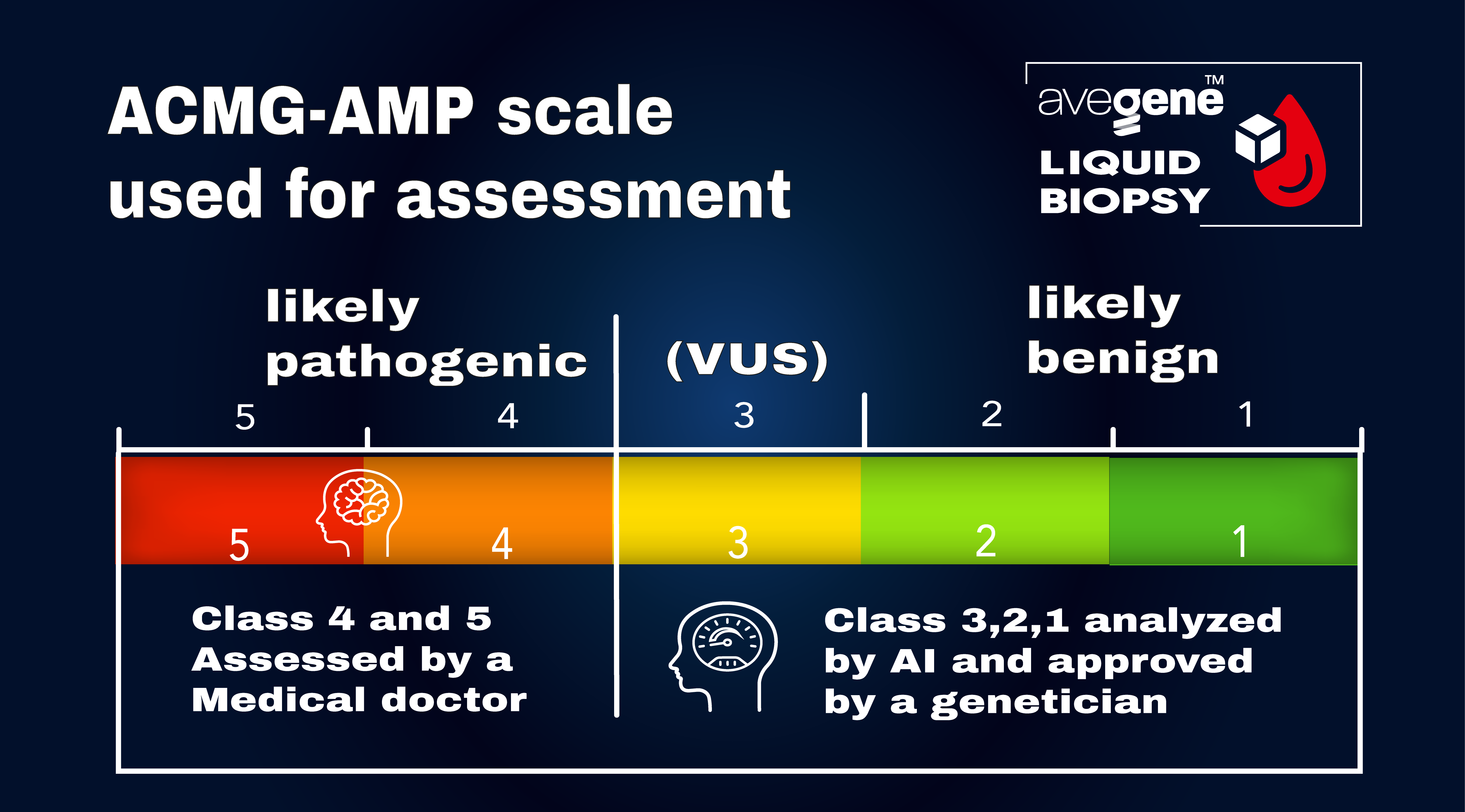How to read and understand the result
How to understand the results of NGS liquid biopsy
Liquid biopsy based on Next Generation Sequencing (NGS) is an innovative method that allows for the detection of circulating tumor DNA (ctDNA) found in the blood of patients with oncological diseases. This method represents a revolution in the diagnosis and monitoring of tumor diseases, especially due to its non-invasive nature and ability to provide comprehensive genetic information about the tumor. However, the results of NGS liquid biopsies can be complex to interpret, and therefore it is important to understand them in a broader clinical context.
1. What exactly does NGS liquid biopsy measure? What exactly does NGS liquid biopsy measure?
NGS liquid biopsy analyzes samples of the patient's blood plasma, where it looks for small fragments of DNA released from tumor cells. These fragments contain tumor-specific genetic changes, such as:
• Mutations in genes (e.g. TP53, KRAS, EGFR)
• Gene amplification (increased number of gene copies)
• Structural changes (e.g., gene fusions, deletions)
• Epigenetic changes (metylace DNA)
The results provide an overview of the tumor's genetic profile and can be used for:
• Diagnosis and classification of the tumor
• Identification of targeted therapy
• Monitoring treatment efficacy
• Detection of treatment resistance
• Monitoring minimal residual disease (MRD)
2. Key terms in NGS results
• Variant allele frequency (VAF): Indicates the percentage of ctDNA carrying a specific mutation in the sample. For example: A VAF of 2% means that 2% of all ctDNA fragments contain this mutation. Higher VAF usually indicates a greater tumor burden.
• Types of mutations:
• Driver mutations: Changes that promote the growth and spread of the tumor (e.g., mutations in EGFR in lung cancer).
• Passenger mutations: Secondary changes that do not have a direct impact on tumor growth.
• Gene amplification: Increased number of copies of a specific gene (e.g. ERBB2 in breast cancer).
• Gene fusion: The joining of parts of two different genes, which can lead to the formation of abnormal proteins that support tumor growth (e.g. ALK fusion in lung cancer.
3. How to read NGS results in practice?
The results of NGS liquid biopsy usually include the following sections:
• Summary of mutations Summary of mutations
Here you will find a list of identified genetic changes. Each change is assigned to a specific gene and type of mutation (e.g., point mutation, deletion). The VAF and the clinical significance of the mutation (e.g., "pathogenic," "likely pathogenic") are also provided.
• Targeted therapy
If the mutation is "actionable" – i.e., there is targeted treatment available for it – the results often include a list of recommended drugs or clinical trials where the patient could benefit from therapy. For example, EGFR mutations in lung cancer indicate sensitivity to EGFR inhibitors. (gefitinib, osimertinib).
• Monitoring treatment response
Dynamic changes in VAF can show how the tumor responds to treatment. A decrease in VAF after treatment indicates a positive response, while an increase in VAF may signal resistance or relapse.
• Resistance detection
NGS can detect new mutations that arise during treatment and lead to resistance. For example, the T790M mutation in the EGFR gene is known for resistance to the first generation of EGFR inhibitors.
4. Practical example of the result
Patient with non-small cell lung cancer:
• EGFR L858R mutation: Driver mutation with VAF 12%.
• Recommended treatment: EGFR inhibitors (e.g., osimertinib).
• Monitoring: After 3 months of treatment, VAF decreased to 0.5%, indicating a good response.
• Resistance: After 6 months, the T790M mutation (VAF 2%) was detected, and a change in treatment was recommended.
5. What is important in interpretation?
• Clinical context: The results of NGS liquid biopsy should always be interpreted in conjunction with clinical findings, imaging methods, and the overall condition of the patient.
• Sensitivity and limitations: Although the NGS method is highly sensitive, there are situations where it may not detect all mutations, especially if the ctDNA concentration is very low.
• Dynamics of tumor profile: Tumor cells are genetically heterogeneous and can mutate during treatment. Repeated testing of liquid biopsies therefore helps track changes over time.
NGS liquid biopsy is a powerful tool that provides a detailed view of the tumor's genetic profile. The key to understanding the results is focusing on the identified mutations, their frequency, and clinical significance. With proper interpretation in the context of the patient's health status, these results can fundamentally influence diagnosis, the selection of targeted therapy, and the monitoring of disease progression.

